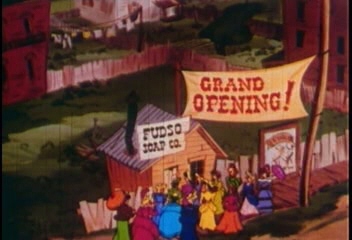Under the leadership of Ronald Reagan, the United States, with political backing from Britain's Margaret Thatcher and West Germany's Helmut Kohl, the West countered the Soviet Union. The United States rearmed and modernized her military.
In 1985, Mikhail Gorbechev became premier of the Soviet Union. Gorbachev enacted economic (glasnost) and political reforms (perestroika) in an attempt to keep pace with the economic and military success of the United States. Gorbechev also decided to no longer support the Communist regimes of Eastern Europe. Recognizing the opportunity, U.S. President Ronald Reagan, in 1987, appealed to Soviet premier to the tear down the Berlin Wall. In the winter of 1989, travel restrictions between East Germany and West Germany were no more. The next year, the dismantling of the Berlin Wall officially began. In 1991, due to both internal and external factors, the Soviet Union was dissolved. The Cold War was over. Freedom has prevailed (at least for now).
Citations:
1Time Almanac with Information Please 2005, copyright 2004, Pearson Education, Inc., page 850
2 Time Almanac with Information Please 2005, copyright 2004, Pearson Education, Inc., page 685.
Also see: www.infoplease.com/spot/topdespots2.html#ado



Ronald Reagan speaking at the
National Association of Evangelicals on March 8, 1983 will not accept the proposed nuclear freeze and he called the Soviet Union an "evil empire."
Entire speech
(33 minutes)
Speech clip
(6:45 minutes)











On January 20, 1961, President John F. Kennedy was sworn in as the 35th president of the United States. During his inaugural address to the nation, he seemed to acknowledge the threat of war.
Less than a year later, Kennedy and the rest of the world would be on the brink of nuclear holocaust in what became known as the Cuban Missile Crisis. In secret, the Soviet Union installed missiles with nuclear warheads, capable of reaching the continental U.S., in Cuba, a puppet state of the Soviets. American intelligence assets identified this change in the balance of power between the two Super Powers.
President Kennedy acted upon this information but neither side appeared ready to back down. The tension quickly escalated. On October 22, 1962, President Kennedy addressed Americans on the Soviet arms buildup in Cuba. He outlined seven initial seven steps. The first of which was a quarantine (i.e. naval blockade) of Cuba. Step 6 was the emergency meeting of the U.N. Security Council.
Three days later, on October 25, 1962, an emergency session of the United Nations Security Council takes place. U.S. ambassador to the U.N., Adlai Stevenson confronted the Soviet ambassador about the Soviet missiles in Cuba and makes his famous "until Hell freezes over" comment. The Soviets eventually "blinked" and agreed to remove the missiles from Cuba after receiving assurance from the Kennedy administration the U.S. would not invade Cuba.
During World War 2, the German army invaded the Soviet Union. The Soviet army eventually repelled the Germans but at the cost of millions of soldiers. The Germans' eastward expansion was stopped. The Soviets then pushed westward. At the close of the war, the continent of Europe became divided and the German nation split into two parts. The west would be free and democratic. The east would be controlled by the Soviet Union. Joseph Stalin, the leader of the Soviet Union, had a repressive regime and those who did not agree with him were sent to forced-labor camps. During Stalin's rule between 1941 and 1953, at least 20 million1 of his own citizens would die in these camps. By comparison, Adolf Hitler's death camps put to death approximately 6 million Jews and 10 million other "undesirable" people2.
In addition to the territory grab by the Soviets, the Communist agenda included the oppression of its people and the the quest for world domination. A response was needed to counter the Soviet threat and to protect freedom, democracy, and capitalism. The United States and her allies responded to this threat. The Cold War had begun. This wasn't a war in the traditional sense but a war of ideology - Democracy versus Communism.

"Many forms of Government have been tried, and will be tried, in this world of sin and woe. No one pretends that democracy is perfect or all-wise. Indeed, it has been said that democracy is the worst form of government except for all those other forms that have been tried from time to time."
(quote from Winston Churchill speaking at the House of Commons on November 11, 1947)
Mr. Churchill recognized the Soviet Union was becoming a threat due to its expansion into eastern Europe.
He also coined the term "iron curtain".
After the Soviet Union detonated an atomic bomb, the Cold War escalated into an Arms Race. The possibility of nuclear war became a possibility and caused a great deal of concern. In response, the U.S. Government, through the Civil Defense program, went about educating the American public of what actions could be taken. Duck and Cover, starring Bert the Turtle, was produced for school children to instruct them on what they could do to protect themselves from atomic fallout. The film was likely more of a way to allay fears than of any real practical use.
A more serious look at atomic fallout was chronicled in the 1951 Civil Defense film Survival Under Atomic Attack. The dangers and effects of the weapon are described: blast, heat (fire), and radioactivity. The film also instructs the public of what they can do to protect themselves, including building a bomb shelter. Atomic bomb explosions and images of the damage to the Japanese cities of Nagasaki and Hiroshima are also shown.


The American Government produced anti-communist material to counter Soviet propaganda. Private companies produced educational materials to explain the differences between the two types of government, communism and democracy, and the two economic systems, socialism and capitalism. The movies portrayed these differences between Democracy and its capitalistic ways and Communism with its socialistic ways.
The film Communism explains why the Soviet Union was recognized as a "grave threat to our nation, to our freedom, and to the peace of the world". A brief history of Karl Marx' Communist Manifesto and Communism's goal of World Revolution is described as is the Communist revolution in Russia.
The film explains Russia's pact with Nazi Germany, until Germany invaded Russia, how Russia was fermenting unrest around the world, and how America was working for freedom. The film also makes other comparisons between democracy and communism.
Make Mine Freedom is an educational film showing the many freedoms Americans enjoy but how quickly freedoms can be lost. In this cartoon, ISM Incorporated (i.e. Communists) attempted to get citizens to sign away their freedom. In a basic way, the cartoon went on to explain the Free Enterprise system and the right to own private property. The character, John Q. Public, lectured management, labor, and politicians and rallied them to run ISM, Incorporated out of town.
Another educational cartoon, Going Places, is described as presenting "fun facts about American business." The movie recounts the life story of Freddy Fudso and how he created and almost loses a soap empire in America's Capitalistic, "profit motive", society. Profit is not a dirty word.


The competing ideologies of the two Super Powers, the United States and the Soviet Union, never directly engaged in open aggression against one another, both used other governments as proxies to wage the Cold War. The Korean and Vietnam wars and the conflict in Nicaragua are prime examples of this. In one instance - the Cuban Missile Crisis - America and the Soviet Union almost engaged directly in armed conflict and the possibility of an all-out nuclear exchange seemed eminent.
"we shall pay any price, bear any burden...to assure the survival and the success of liberty"
"ask not what your country can do for you, ask what you can do for your country"
Kennedy declares a quarantine of Cuba
Adlai Stevenson confronts the Soviets at the United Nations
Although the United States and Soviet Union never directly exchanged fire, their fight was conducted by proxies in the Korean War, Vietnam War, and many countries of Central America, Africa, and the Middle East. The Soviet Union was getting assistant by the peace movement, especially in Europe.
When Ronald Reagan was elected president in 1980, some reactionaries thought Reagan would start World War III. Many opponents tried to label the president as a war monger.
During much of the 1980s, a strong peace movement in Europe worked to stop the United States from countering the tactical nuclear missiles the Soviets were installing in East Germany. The peace movement wanted arms control treaties and to appease the Soviets much like Neville Chamberlain and Europe did with Adolf Hitler prior to World War II. Ronald Reagan would have none of that.
Reagan understood the menace Communism and the Soviet Union posed to the Western way of life, to freedom, and to democracy. On March 8, 1983, in one of the defining moments of his presidency, he cautioned against the temptation to freeze nuclear weapon reductions and "to ignore the facts of history and the aggressive impulses of an evil empire, to simply call the arms race a giant misunderstanding and thereby remove yourself from the struggle between right and wrong and good and evil". Reagan firmly believed there could only be peace through strength.


During the 1984 Presidential Debate, Ronald Reagan tells the "moderator" he would not make age an issue.
Reagan's conviction followed him through both terms of his presidency. In the 1984 presidential campaign against Democrat challenger Walter Mondale, national security and the economy were major issues. Two television advertisements, "The Bear" and "Morning Again" from the 1984 Reagan Presidential Campaign effectively recognized the electorate's concerns. Reagan would carry every state in the nation except Minnesota (Mondale's home state).
Ronald Reagan speaking about the Berlin Wall and his meeting with Soviet Premier Gorbachev in 1987 where her urged Gorbachev to tear "down that wall".
On March 5, 1946 President Truman introduced Winston Churchill at Westminister College in Fulton, Missouri. Mr. Churchill commented on the Soviet Union:
West Germany, formally known as the Federal Republic of Germany, was controlled by the democratic nations, the United States, the United Kingdom, and France, and would be one of the recipients of the Marshall Plan. In 1948, the U.S. Congress authorized the Marshall Plan. This foreign aid package helped the war ravaged democratic European nations recover from the war and by the time the plan ended three years later, the United States had spent $13 billion (over $105 billion in 2005 dollars) to help western Europe recover from the war. West Germany eventually became a stable, free, and democratic nation. East Germany (formally known as the German Democratic Republic), by contrast, and the rest of what would become known as the Soviet Bloc or Eastern Europe, would become satellites of the Soviet Union and would suffer from Communist oppression. The only exception to this was in the former German capitol of Berlin situated in the heart of East Germany. Berlin, after the Soviet refusal to withdraw, was split into four sectors, one for each ally. The divided city of Berlin would become a striking symbol during the 45-year of the Cold War.
Click the image above to watch the video.
Click the image above to watch the video.
Click the image above to watch the video.
Click the image above to watch the video.
Click the image above to watch the video.
Click the above image to watch the 1984 Ronald Reagan presidential campaign TV ad "The Bear."
Click the above image to watch the 1984 Ronald Reagan presidential campaign TV ad "Morning Again."
Please note: The audio and video on this page require Windows Media Player. The player will launch in a new window and the media may take a few moments to load.

















